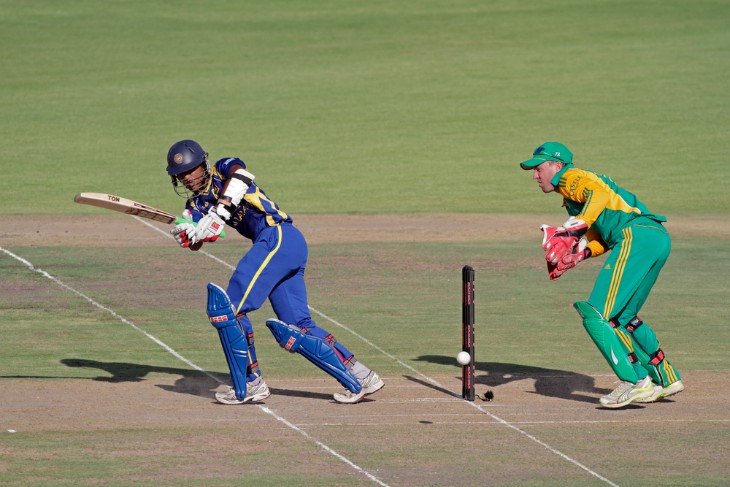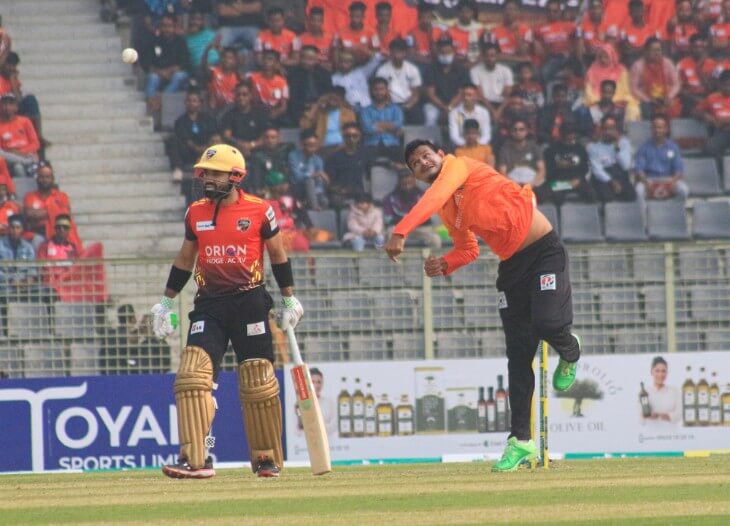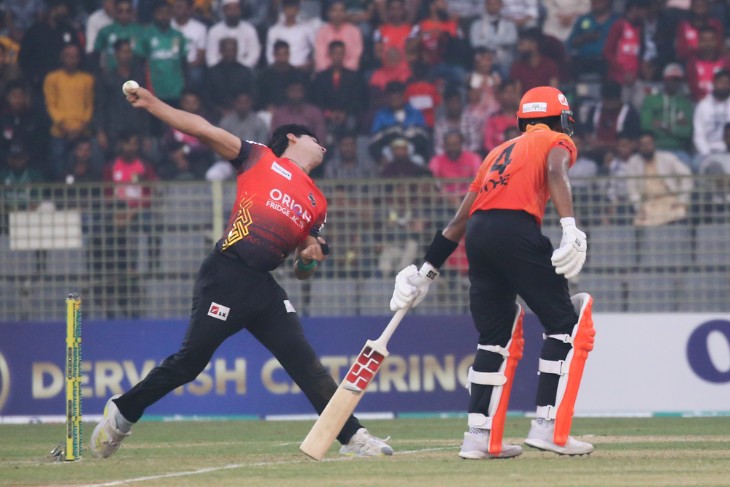- Introduction
- When does the umpire signal a free hit?
- When was the free hit used for the first time?
- Free-hit rules
- Fielding restrictions during a free hit
- Advantages for batsmen in a free hit
- Is there a free hit in Test cricket?
- What happens when you are bowled a free hit?
- Can you run when bowled on a free hit?
- Bottom Line
Introduction
Free hit in cricket is one of the best innovations in the game. A free hit not only adds to the excitement and drama but can also change the complexion of the match. The concept of a "free hit" in cricket represents a unique and game-changing rule that has added an extra layer of excitement to the sport. Essentially, it involves a specialised delivery, bowled as a penalty to the batting side.
What sets a free hit apart from a regular delivery is that the batsman enjoys immunity from most conventional modes of dismissal. This means that regardless of how the delivery unfolds, whether it's a boundary, a mishit, or even a swing and a miss, the batsman cannot be declared out by traditional methods such as being bowled, caught, or given out leg-before-wicket (LBW). So what is free hit and how does it work? We explore all of it here.
When does the umpire signal a free hit?
A free hit in cricket is a rule triggered by a specific action of the bowler—delivering a no-ball by overstepping the bowling crease. This overstepping essentially means that the bowler has transgressed the front line, infringing upon the batsman's space during the delivery. To alert everyone on the field and in the stands about the upcoming free hit, it's the responsibility of the on-field umpire to make a clear and unmistakable signal. This is accomplished by raising one arm high above their head and forming a circular motion with their index finger.
The significance of this signal lies in its ability to grant a considerable advantage to the batting side. It's a moment of anticipation and excitement as the batsman prepares to face a delivery where they can't be dismissed by traditional means, except in rare instances. This gesture also adds an element of transparency and clarity to the game, ensuring that all stakeholders understand the change in the delivery's status and the unique rules that apply to a free hit.
When was the free hit used for the first time?
The introduction of the free hit in international cricket by the International Cricket Council (ICC) marked a significant milestone in the sport's evolution. This revolutionary rule was implemented during the late 20th century, specifically in the early 1990s, with its debut in the One Day Internationals (ODIs) format. The key driving force behind this innovation was the desire to address a particular issue that had been causing concern in the cricketing community: bowlers consistently overstepping the bowling crease, leading to no-balls.
Overstepping, where a bowler's front foot crosses the line of the bowling crease during the delivery stride, has become a prevalent issue. This transgression not only disrupted the rhythm of the game but also frustrated both players and spectators. The ICC recognised the need to introduce a deterrent against such a breach of the rules. The result was the birth of the free hit, designed to penalise bowlers who overstepped the crease by granting the batting side not only a bonus run but also a unique opportunity to take full advantage of the following delivery.

Free-hit rules
Let's delve deeper into the rules governing a free hit:
1. Only the batsman can be dismissed through specific means: One of the most fundamental aspects of a free hit is that it provides significant protection to the batsman. They can only be dismissed through a limited set of means, which include run-outs, obstructing the field, or hitting the ball twice. In all other respects, the batsman is secure and cannot be declared out. This rule encourages aggressive shot-making and inventive stroke play since the batsman doesn't have to worry about conventional modes of dismissal like being bowled, caught, or given out leg-before-wicket (LBW).
2. The fielding side can make changes: While the batsman enjoys a level of protection during a free hit, the fielding side is not without options. They can adjust field placements to counter the batsman's strategy. This flexibility allows the fielding captain to respond to the situation, creating a dynamic tactical environment. However, it's essential to note that some restrictions on field placements still apply during the free hit, which will be discussed in the next section.
3. The batsman can change strike: Another unique aspect of a free hit is that the batsman can change ends at the conclusion of the free-hit delivery. This mirrors the usual practice of switching ends during regular deliveries. This strategic element can be advantageous for the batting side, allowing them to manipulate field placements, adapt to the bowler's line and length, and exploit gaps in the field.
4. The penalty for a further no-ball: If the bowler commits another no-ball, overstepping the crease during the delivery of a free hit, it results in another free hit. This rule ensures that the penalty for overstepping is consistent and maintains the batting side's advantage, provided the bowler's infraction persists.
Fielding restrictions during a free hit
During a free hit, fielding restrictions come into effect, mirroring a concept somewhat akin to the powerplay overs in limited-overs cricket. These restrictions are designed to create a dynamic and engaging atmosphere during a pivotal moment of the game.
Specifically, one of the key fielding restrictions during a free hit pertains to the number of fielders permitted outside the 30-yard circle. The 30-yard circle is a designated area around the pitch's center. Typically, during regular phases of play, there's a certain number of fielders allowed outside this circle.
Advantages for batsmen in a free hit
During a free hit, fielding restrictions come into play to maintain a level of equilibrium between the batting and fielding sides and to ensure that the batsman enjoys certain advantages. These restrictions are somewhat analogous to the regulations applied during powerplay overs in limited-overs cricket. In both scenarios, the aim is to encourage exciting and attacking cricket while making the game more competitive.
One of the key aspects of fielding restrictions during a free hit is the limitation on the number of fielders allowed outside the 30-yard circle. The 30-yard circle is a specified boundary from the centre of the pitch, and fielding restrictions are put in place to promote aggressive batting and enhance the chances of scoring boundaries. Typically, during a free hit, only two fielders are permitted to be stationed outside the 30-yard circle, excluding the wicketkeeper.
Is there a free hit in Test cricket?
The concept of a free hit is predominantly a feature of limited-overs cricket, specifically in formats such as One Day Internationals (ODIs) and T20 Internationals. These formats are characterised by their shorter duration and a greater emphasis on fast-paced action.
In limited-overs cricket, the free-hit rule is a game-changer, injecting excitement and encouraging aggressive batting. It serves to captivate audiences with its potential for high-scoring and thrilling encounters. The rule aligns with the fast and furious nature of limited-overs cricket, where teams aim to maximise their run-scoring within a restricted time frame.
In contrast, Test cricket stands in stark contrast to the limited-overs formats. The focus in Test cricket is on building a patient and defensive innings, with matches lasting up to five days. Test cricket revolves around strategic gameplay, where the batting side aims to accumulate runs while the bowlers focus on taking wickets through skill and endurance.
What happens when you are bowled a free hit?
In the intriguing realm of free hits in cricket, a notable aspect that distinguishes them from regular deliveries is the fate of the batsman when they are bowled. If a batsman is bowled during a free hit, it does not result in their dismissal. This distinctive rule adds a layer of drama and excitement to the game, as it allows the batsman to continue their innings unscathed.
This rule is a testament to the unique advantages that free hits offer batsmen. It provides them with an even greater incentive to adopt an aggressive approach during these deliveries. Knowing that they cannot be dismissed through conventional modes such as being bowled, caught, or given out leg-before-wicket (LBW) on a free hit, batsmen are encouraged to swing freely and play shots that they might hesitate to attempt during regular deliveries.

Can you run when bowled on a free hit?
Certainly, the rule that allows batsmen to run when they are bowled on a free hit is one of the most intriguing and unique aspects of this innovation in cricket. When a batsman is bowled on a free hit, it signifies that the stumps have been disturbed by the bowler's delivery, yet, remarkably, the batsman remains securely in place at the crease. This is in stark contrast to the standard cricket scenario, where being bowled results in the batsman's dismissal.
The intriguing twist is that despite the stumps being disrupted, the batsmen aren't deterred. They can still look to score runs in two distinct ways. Firstly, they can earn runs through the shots they play. If the ball comes into contact with the bat or another part of the batsman's body and travels away from the stumps, it's fair game for runs to be taken, even if the delivery bowled them. Secondly, and perhaps more excitingly, they can opt to take runs by physically running between the wickets, caused by a bowled delivery. This unusual rule turns what would typically be a moment of despair for batsmen into an opportunity for more scoring, enhancing the overall drama of a free hit.
Bottom Line
Free hit is an interesting development in cricket that is exciting for batsmen and fans but can be a cause of frustration for bowlers. The free hit rule penalises the bowler even more, regardless of whether it is the bowler's fault or not.
In short, the free-hit rule has emerged as a game-changer in the world of limited overs cricket. This innovative rule provides a golden opportunity for batsmen to add an extra dimension to their game.
For more information:


